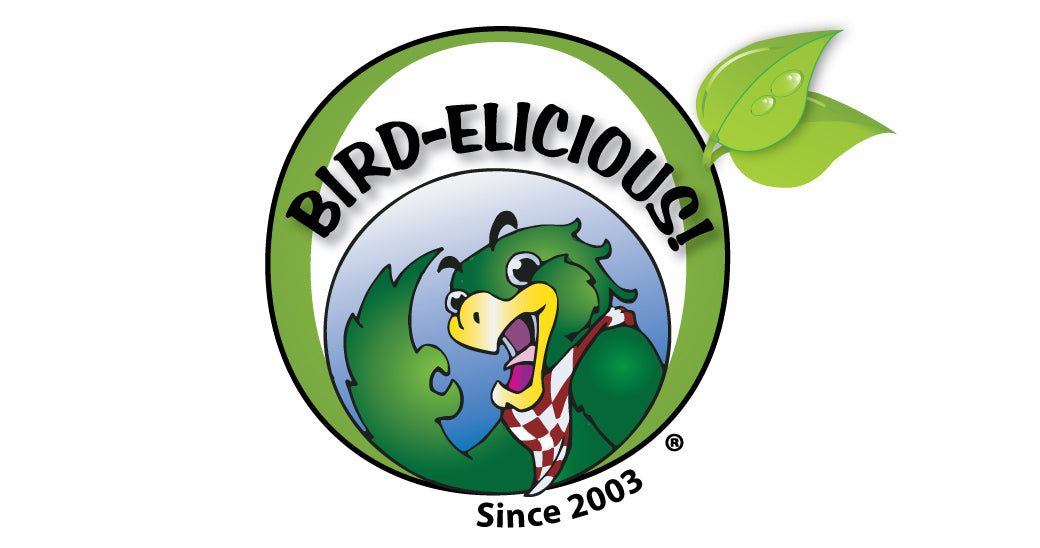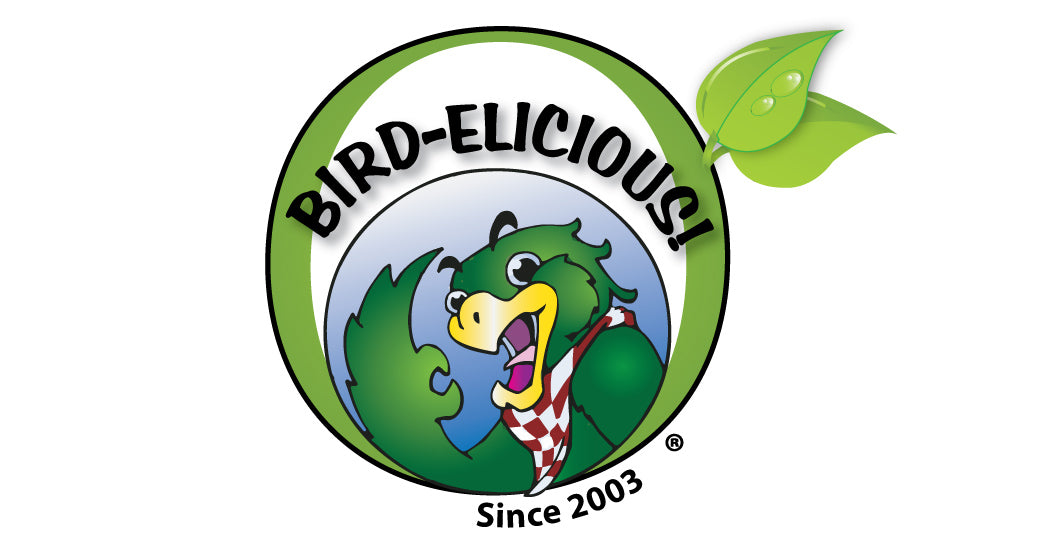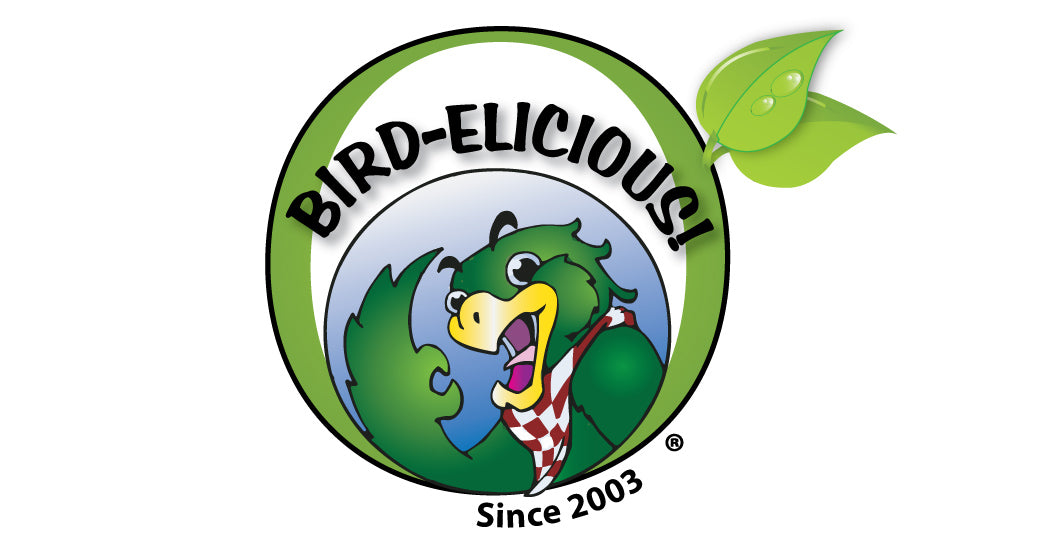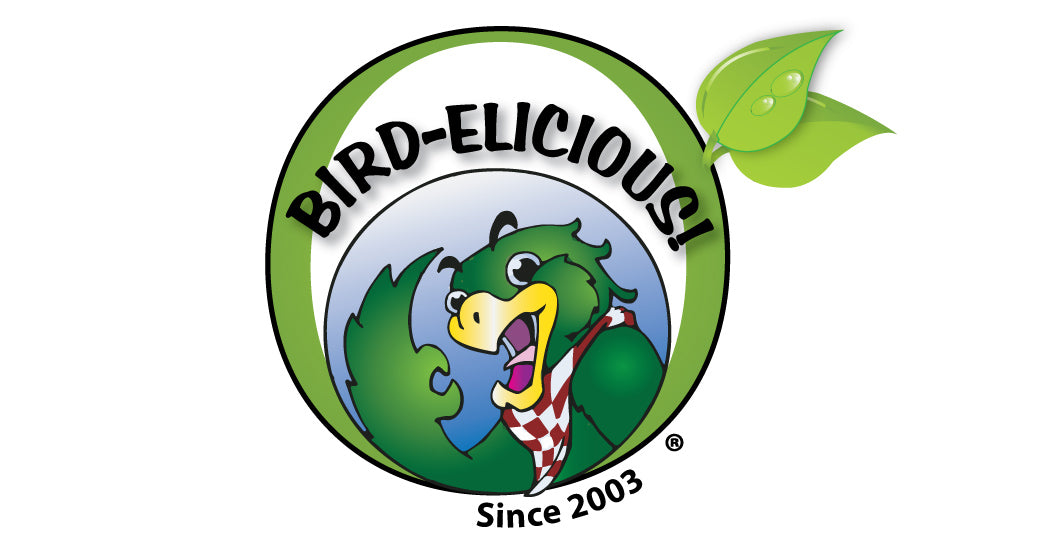Right from the start let’s get something straight about certified organic foods and uncertified, conventional foods – the former, certified organic is not necessarily more nutritious, but it is healthier. The latter, uncertified, conventional foods insert the potential for many health risks, such as certain kinds of cancer, allergies, mood disorders and more. Certified organic foods may or may not be grown in a more nutritious manner, but they certainly do not contain chemical synthetics – at least if they are not processed using chemically synthetic preservatives, and/or artificial flavorings and/or artificial colorings. Any time chemical synthetics and artificial ingredients are not used in foods the potential for health risks are lowered, and the possibility of increased health and well-being are higher. Certified organic foods that are not highly processed are much healthier overall.
BirD-elicious! Origins Wild Diets (OWD) are not “certified” organic, but in theory and in practice our foods are probably more organic than most companies. We have never claimed that our foods are certified organic, nor have we claimed that our foods are a total and complete diet for exotic birds (but they are nutritionally balanced) – of course that last statement requires an entire article discussing that topic alone.
The term “organic farming” got its start back in the 1940’s when J.I. Rodale, founded the Rodale Research Institute and began publishing Organic Farming and Gardening magazine. Rodale is known as the father of organic farming. However, Rodale drew from the knowledge and example of Sir Albert Howard, a British scientist whom we have to thank for the entire theory and works of organic farming. His idea was to take what came naturally from the soil and return it to the soil to improve the nutrients plants derive from that very same soil. Instead of using chemicals to boost the nutrition of plants he utilized natural nutrients to boost nutrition plants have to offer. He used crop residues, green manures, and natural wastes by sowing them back into the farming soil promoting the idea of working with Nature, not against it using deep-rooted crops to draw nutrients from the soil. (1)
Fast forward about 30 years, in the 1970’s organic farming really started gaining popularity. Society had just about had enough with chemical laden produce. It was after all, in the 1950’s and 1960’s that mass farming and food processing began using chemical fertilizers, pesticides, chemical preservatives and artificial coloring. (2) Unfortunately, in today’s time, we are finally learning the kind and amount of harm, and negative effects all of these chemicals have had and are having on the quality of farming soil, the produce itself and our own human and animal systems as well as all environmental elements and biologics.
Natural preservatives such as salt and herbs have been used since the mid-century 400-1450 A.D. gaining more popularity in the 1700’s. Preservation by canning became popular around 1825. The mother of all food preservation is “drying” or otherwise known as dehydration. This method has been used since ancient times, even before recorded history. Today dehydration is still the most reliable, stable and natural method of food preservation which not only stops spoilage but retains almost all naturally occurring nutrients thus eliminating the need for synthetic nutrients to be added back in after preservation. Of course, there is freeze-drying, pasteurizing, fermenting and carbonation, but none have proven to be as effective, both in preserving food and retaining the original nutrition as gentle dehydration. Chemically synthetic preservatives didn’t really gain popularity until the mid-1950’s, and then they began to flourish as the new and effective method for food preservation. The three main classes of chemically synthetic preservatives are Benzoates (such as sodium benzoate), Nitrites (such as sodium nitrite), and Sulphites (such as Sulphur dioxide), all chemical salts created and produced in a laboratory. (3) Today there are hundreds of chemically synthetic food preservatives as well as irradiation used to both prevent spoilage and also to destroy bacteria and other potentially pathogenic constituents and microorganisms.
Then along came monosodium glutamate, or commonly known as MSG. This is not a preservative, but a chemical salt flavoring to help titillate the taste buds falsely giving the brain the idea of “taste satiation” (satisfaction) after the natural taste and nutrients have been depleted from highly processed foods. Chemically synthetic preservatives, flavorings and colorings have since been found to cause or add to many health disorders such as skin irritations, respiratory conditions, not to mention the influence they have on mental states of minds. No less, these potentially harmful conditions have also been found to be true with the use of chemical fertilizers and pesticides. In fact, the entire idea and utilization of chemicals in our society has been suggested to cause many of the health problems we and our pets suffer today! MSG is hidden in many processed foods under many, many names such as “natural flavorings,” “whey,” “isolated whey and soy protein,” “broth,” “maltodextrin,” “barley malt,” “malt,” and so much more. See all of the items and names MSG is in or suspected of hiding within: http://www.truthinlabeling.org/hiddensources.html.
It was in the early 1900’s that the U.S. government began looking into mislabeled foodstuffs. By 1906 the Pure Foods and Drug Act was passed by Congress, but this only covered foods after they were placed on the market. In other words, oversight only took place after foods were already on the market, safe or not. It wasn’t until 1933 that the government decided to replace the Pure Foods and Drug Act calling it obsolete and incomplete. By 1938 the government began flexing its muscles and created the Federal Food and Drug Act now commonly known as the FDA. Artificial colors were not regulated until 2005. (4)
So just what is my main point and reasoning behind supplying all of the information above? Simple, it is one thing for a food company or retailer to claim or actually be “certified organic” by the FDA, it is quite another to maintain a facility where absolutely no chemically synthetic laden foods can potentially be intermixed with truly organic foods. And that right there is where I have my “beef.”
Truly certified organic foods must go through the rigorous process of certification by agencies recognized and certified by the FDA. This is very, very costly. Beginning at around $2000.00 for initial certification with a hefty annual fee of at least $1000.00 or more to remain certified! This process causes your food to cost more! FDA has now become the “masseter,” or jaw muscle of bureaucracy where food is concerned.
“Certified Organic” is more of how foods are processed, not only how foods are grown and produced and ultimately what has been added to that foods before reaching the consumer. First, foods must be certified in the farmers’ fields ensuring produce, and other foods are not grown using chemically synthetic fertilizers and chemically synthetic pesticides. Secondly, the processing plant must be certified to ensure no chemical synthetics are used during processing such as sorting, washing, and packaging. Third, the wholesale distributor must be certified. And finally, fourth the retailer must hold certification ensuring the consumer that their organic foods never come in contact with un-certified, conventional foods. Do you see where this is leading? Lots and lots of money for bureaucratic agencies who are deemed worthy by the FDA to grant certification to all of the farmers, processors, wholesalers and retailers! Wow, someone is making a lot of money off all of the certified companies and those who actually pay the final price tag? YOU, the consumer! Quite frankly I don’t believe having organic foods certified two, three and four times is necessary and furthermore all quadruple certification does, in my opinion is raise the price of your foods while making the certifying agencies loads of cash!
Unfortunately the “certified organic label” does NOT ensure that the food you, your family and your pets consume is actually healthy, nutritious, does not contain chemical synthetics or SAFE! Or that your organic food has never come in contact with uncertified, conventional foods; you just have to trust the retailers you purchase from that they maintain “safe” areas where certified and uncertified, conventional foods never come in proximity of one another! Wow.
Adding to this conundrum of tainted foods possibilities is the FACT that FDA allows food producers to use chemical flavorings, synthetic vitamins and synthetic preservatives in foods AFTER those foods have been grown as certified organic foods! Really??? Wow. How can we, as a society actually believe these foods are healthy for us when certified organic foods are allowed to contain so many synthetic chemicals?
Here at Origins Wild Diet bird foods almost all of our ingredients are certified organic at the farms, the processors, and the wholesalers we purchase from. Also, our company doesn’t use any ingredients that are not at least “wild-crafted,” meaning they are grown naturally without the use of chemical synthetics. Or the ingredients we use are truly certified organic all the way down the line on their way to us by the farmers, processors, and wholesalers. Once in our facility organic foods do not ever, ever, EVER come in contact with un-certified, conventional ingredients deemed human grade because that is all we use and sell. The only ingredient OWD uses that is not human grade certified organic, because FDA doesn’t recognize it as human food are the meal worms we use. Digging deeper, almost all of our foods never, never contain any synthetic vitamins (except for Birdie Brittle and Better Feathers for feather-destroying birds who suffer malabsorption). Our foods do not contain synthetic preservatives or artificial coloring or flavoring. Our formulated foods, for the most part only contain naturally occurring nutrients, colors, and flavors.
Now, let’s turn to other retailers for a moment. Most retailers package and sell both certified and uncertified, conventional foods. How and to what extent can they guarantee that their uncertified, conventional foods never, never, ever come in contact with their certified foods? They can’t. It would take a certifying agency standing watch over every phase of processing and packaging at those companies every. single. day., day in and day out they operate! And no! That is absolutely not going to happen! Yes! You are about to be educated on what truly organic is and what “paid to play” certified organic is. It’s all bogus BS.
Many retailers process and package their own foods. How can they possibly guarantee they don’t intermix uncertified, conventional foods with certified organic foods? Again, they can’t, not unless they maintain completely separate facilities, absolutely not connected where they process and package uncertified, conventional foods and certified organic foods. For most retailers doing that costs way too much. So they PAY an agency to visit once a year to make sure uncertified, conventional and certified organic foods don’t come in contact with each other. Really? Once a year?
Never mind about the disclaimers on their packages stating that “this food was processed and/or packaged in a facility where there are….peanuts, soy, etc.” That statement right there gives them the freedom to intermix foods that should not be intermixed with each other and get away with it!
Here at Origins Wild Diet bird foods, there is no risk of our formulated foods or our single item foods we sell come in contact with uncertified, conventional foods. Why? Because we don’t use anything except certified organic ingredients in our bird foods and the single food items we sell are the very same foods we use in our formulated bird foods!
We simply will not “pay to play” when it comes to certified organic foods. We know that almost all of the ingredients we use in our Origins Wild Diet foods, plus the single item foods we sell in our webstore have been deemed “certified organic” at least two times, usually three before they ever reach our facility! Each phase, all along the way the ingredients we use in our formulated foods, as well as the single item foods we sell, have been deemed “certified organic” via very high costs our suppliers pay to agencies that certify and the FDA! We don’t have those costs, so we are able to sell single item foods at a much lower cost than any certified organic retailer! We have obtained many of the certificates from our wholesalers to prove our foods are not tainted with synthetic chemicals. Also, our wholesalers state on their own websites, many with copies of their organic certification that they are, indeed “certified organic” suppliers of foodstuffs.
Furthermore, we have no problem listing our suppliers, and we do so on this page of our website, near the bottom of the page: http://www.thebestbirdfood.com/fresh-foods-what-is-fresh.
The bottom line, those who are buying from “certified organic” retailers cannot be absolutely sure the foods purchased have not come in contact with uncertified, conventional foods if the retailer sells both or uses both in their processed foods. Just like the facility that states on their package labels “This food was processed in a facility where nuts, peanuts, and soy is used,” the same possibility of tainted foods holds true for both uncertified, conventional foods and certified organic foods processed in the same facility.
Why pay higher prices for certified organic when there is no absolute guarantee those foods are not tainted by coming in contact with uncertified, conventional foods? Especially when lower costing organic foods are available and have been certified as organic at least two or three times before arriving at a facility that houses and uses 99.999% previously certified organic foods? It just doesn’t make good common sense, good judgment and it hurts your financial bottom line!
©1.18.17 Passion Tree House LLC – All Rights Reserved
Ref: (1) http://www.sare.org/Learning-Center/Bulletins/Transitioning-to-Organic-Production/Text-Version/History-of-Organic-Farming-in-the-United-States; (2) https://sites.google.com/site/preservingfoodforeled/home/history-of-food-preservation; (3) https://rdsscience2011.wikispaces.com/The+History+of+Preservatives; (4) http://www.fda.gov/AboutFDA/WhatWeDo/History/FOrgsHistory/CFSAN/ucm083863.htm.




Leave a comment (all fields required)